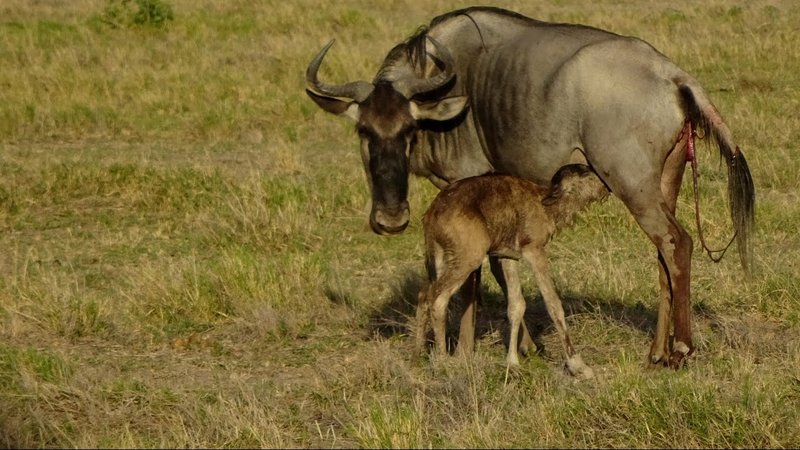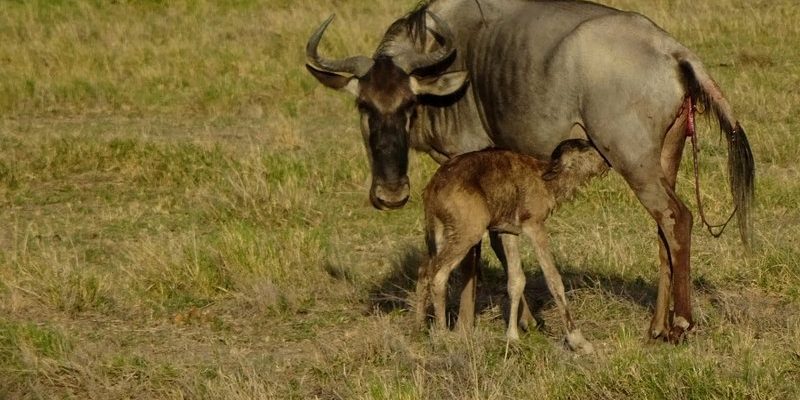
So, what’s the game plan? You might be wondering if you should stay still, back away slowly, or call for help. Don’t worry! In this guide, we’ll walk through everything you need to know about how to handle this wild encounter. From understanding wildebeest behavior to ensuring your safety, you’ll feel prepared for a close encounter with these fascinating animals.
Understanding the Wildebeest
Before diving into what you should do if you see a wildebeest, let’s take a moment to understand these animals a bit better. Wildebeests, also known as gnus, are large antelopes native to Africa. They are famous for their massive migrations, traveling thousands of miles across the plains in search of food and water. They travel in herds, and during these migrations, the sight of thousands of these animals can be simply mesmerizing.
Wildebeests are generally not aggressive, but they can become defensive if they feel threatened. Picture a large, robust animal that’s a bit like a stubborn, protective bull. If they sense danger, they might charge or run away quickly. That said, they’re usually more interested in eating grass than they are in causing trouble.
So why should you care about their behavior? Understanding what a wildebeest might do in different situations can help you stay calm and make smart choices if you encounter one.
Stay Calm and Observe
If you come across a wildebeest, the first step is to stay calm. Take a breath and don’t panic. Animals, including wildebeests, can sense fear, and that might make them feel uneasy. Look at the wildebeest from a distance and take a moment to observe its behavior. Is it grazing peacefully, or does it seem alert and on edge?
When observing, keep in mind that wildebeests are part of a larger ecosystem. They might be surrounded by other animals or wildlife, so it’s a good idea to scan the area. If there are other animals nearby, it might indicate that the wildebeest feels safe, which can give you a sense of security too.
Here’s a small tip: Use the moment to take in the beauty of your surroundings. Nature has a way of reminding us to slow down and appreciate what’s around us.
Keep Your Distance
While it might be tempting to get closer for a better look or a photo, it’s important to remember to keep your distance. Wildebeests are wild animals, and getting too close can make them feel threatened. Use binoculars or a zoom lens for photos, so you can capture the moment without intruding on their space.
A good rule of thumb is to stay at least 100 meters (about 328 feet) away if possible. If the wildebeest starts to move toward you, that’s your cue to back away slowly. Make sure you’re aware of your surroundings as you do so!
Here are a few things to keep in mind while keeping your distance:
- Do not approach the wildebeest or any nearby wildlife.
- Make sure you’re not blocking any pathways the animal might want to take.
- Remain quiet to avoid startling the animal.
Understanding Their Signals
Wildebeests communicate using body language, and understanding these signals can be crucial. If a wildebeest raises its head, flicks its tail, or snorts, it might be sensing something unusual. These behaviors indicate that it feels threatened and is on alert.
Also, keep an eye on its ears. If they’re perked up and moving, it’s actively listening to its environment. On the other hand, if they’re relaxed, it might be more interested in grazing. Remember, animals usually want to avoid confrontation, so if you see these signs, it’s best to slowly retreat.
It’s helpful to visualize it like this: think of the wildebeest as a friend who’s suddenly become quite serious. You’d want to give them space and pay attention to their cues, right?
What to Do if You Feel Threatened
In the rare event that a wildebeest charges at you, this is where staying calm becomes even more critical. Your instinct may be to run, but that can often escalate the situation. Instead of running, try to back away slowly while keeping your eyes on the animal.
If the wildebeest continues to approach, it might be best to find cover or a sturdy object between you and the animal, like a tree or a large rock. This will help shield you and may deter the wildebeest from getting closer.
Remember, wildebeests are more concerned with protecting themselves than attacking humans, so give them the space they need to feel safe.
When to Seek Help
In most cases, simply observing the wildebeest from a safe distance is perfectly fine. But if you see that the animal is injured or acting unusually aggressive, it’s time to seek help. Look around for park rangers or local wildlife officials. They have training in handling wildlife encounters and can assist if needed.
Let’s say you notice a wildebeest that appears wounded or seems separated from its herd. In that situation, it’s best not to intervene yourself. Instead, report your findings to the proper authorities so they can address the situation properly.
It’s always better to err on the side of caution. Your safety and the well-being of the animal matter most.
Respecting Wildlife and Nature
Every encounter in the wild should be an opportunity to learn and appreciate nature. Wildebeests play a vital role in their ecosystem, helping to maintain the balance of their environment. Understanding this connection can deepen your respect for wildlife.
When you go into their habitat, practice responsible wildlife viewing. This means not approaching them and allowing them to thrive without human interference. Keeping wildlife wild is essential for their survival and for future generations to enjoy the same experiences you have.
Taking a moment to respect these animals not only enhances your experience but helps ensure that these majestic creatures continue to roam the plains for years to come.
Encountering a wildebeest can be an exciting, unforgettable experience—if approached the right way! Remember to stay calm, keep your distance, and observe their behavior. These beautiful animals are part of a larger ecosystem, and every sighting is a chance to connect with nature.
By following these guidelines, you can enjoy your wild encounters safely and respectfully. So, the next time you find yourself on a safari or in the great outdoors, keep these tips in mind and embrace the adventure. Nature is full of surprises, and who knows what you might discover!

